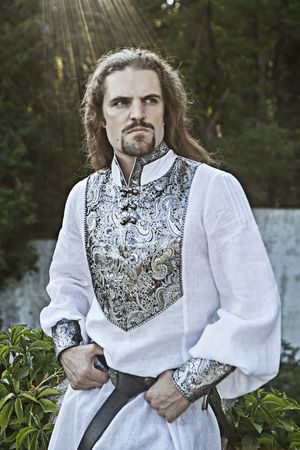Medieval Shirts
Medieval shirts for sale
One of the oldest findings of the garment made of woven fabric is a linen shirt at Egyptian tomb at Tarkan, going as deep as 3000 BC in historical layers. Even this early in registered mankind chronicles, its construction resembled medieval shirts – the upper-body piece of clothing had sleeves and was rather loose.
No need to highlight the importance of undergarments: their role is as essential in modern world as it was in medieval times and even before. However, without laundromats it was much easier to wash a thin shirt than a leather jacket or a gambeson.
During the Middle Ages shirt was a typical men's underwear (as compared to women’s chemises) and was kept out of sight. Only humble members of society could be seen wearing just an undershirt. Later it peeps out shyly in parts, such as collar and cuffs. Collars step forward in the 16th century with embroidered motifs and then flourish up to jabots.
Near is my shirt, but nearer is my skin
Developing a persona, we usually focus on a final appearance, however the basic layer of clothing is really essential for our comfort. Skin of modern person is used to soft synthetic fabrics most of us wear in everyday life. So instead of stressing your skin with harsh field conditions at a long-lasting festival you can buy medieval shirt made of thin linen, breathable and smooth to the touch. Or a bunch of them: there is definitely no need in giving the shirt off your back as prices in our medieval shirts store are a welcome surprise. Pay your attention instead on the features distinguishing us from fellow-professionals:
- high quality natural flax linen
- manual work of our seamstresses
- tailor made items for those looking for fit without a wrinkle
- items from stock for those in a hurry
- unique designs inspired by historical sources though differentiating you from your campmates and strangers at SCA gathering, Renaissance Fair or at any other medieval event.
We offer medieval shirts of viking, classic medieval, norman and Renaissance styles and expect even more to broaden the range!






